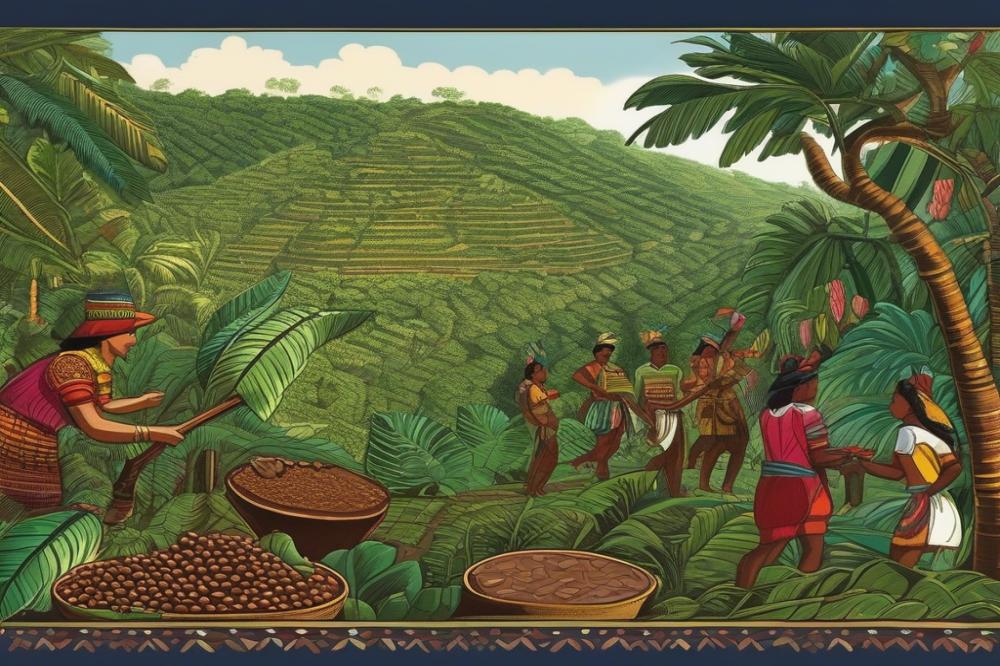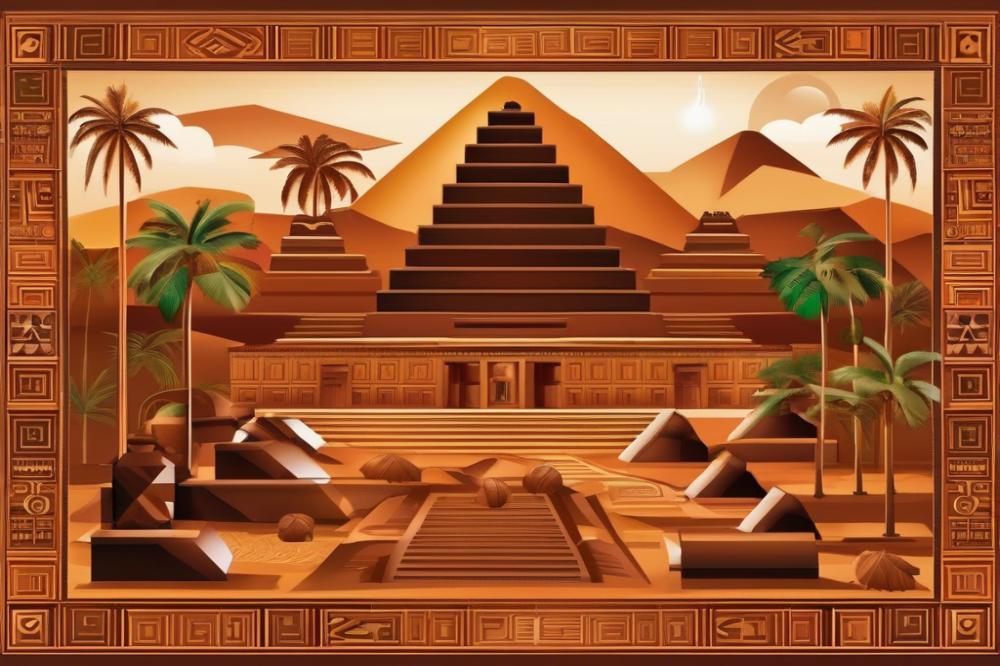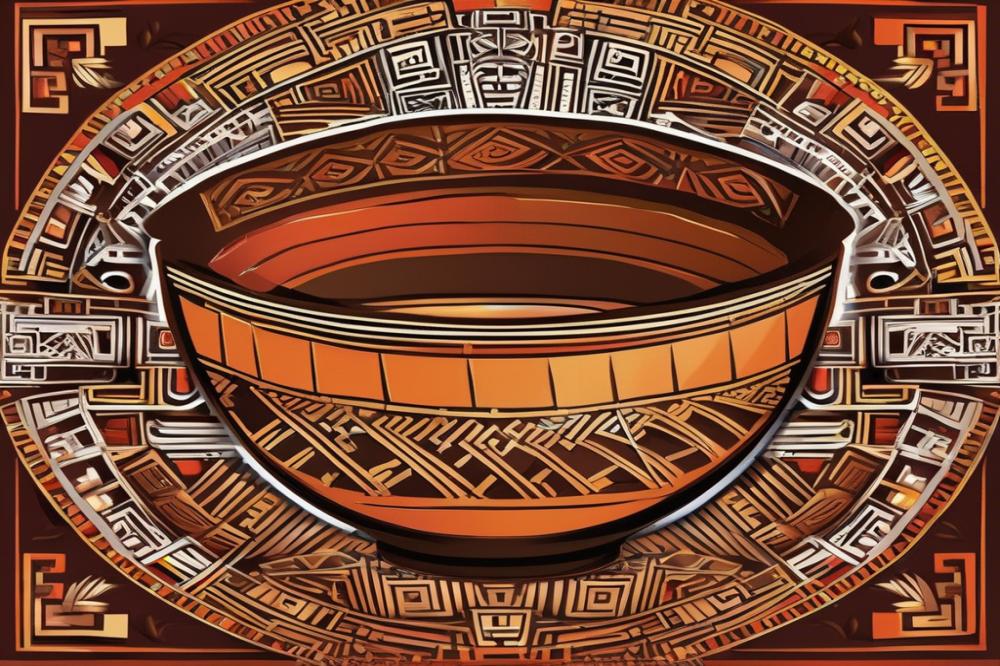The Rich History of chocolate in Mexico: From ancient civilizations to Modern Delights
chocolate holds a special place in the hearts and traditions of Mexico. The journey of this beloved treat begins with cacao, the bean from which chocolate is derived. This small yet powerful seed was revered by ancient cultures, from the Mayans to the Aztecs. It served not only as a source of nourishment but also as a vital part of rituals and ceremonies.
In the context of ancient civilizations, cacao was much more than just a food item. For the Mayans, it represented wealth and was often consumed during significant events. Rituals surrounding cacao included offerings and the creation of ceremonial drinks, which highlight its deep cultural significance. Similarly, the Aztecs valued it for its stimulating properties and even used it as currency.
Exploring the history of chocolate reveals a rich tapestry of culinary traditions that have evolved over centuries. From bitter drinks to sweet confections, the transformation is fascinating. Today’s chocolate recipes bear the marks of ancient practices, yet they also reflect modern tastes. The unique flavors and uses of cacao invite a broader understanding of its role through different eras.
Understanding the past is essential when examining how chocolate became a global phenomenon. It connects us to indigenous cultures that shaped its journey and taught us how to appreciate this remarkable gift from nature. The legacy of cacao and its transformation into modern chocolate continues to delight people worldwide, making it a worthy topic of exploration.
The Origins of Cacao in Ancient Civilizations

The history of chocolate begins with cacao, a plant treasured by ancient civilizations in Mesoamerica. This region included cultures like the Mayans and Aztecs, who saw cacao beans as more than just food. For them, cacao represented wealth and power. It was often used in ceremonies and as a form of currency. Trading cacao beans was common, highlighting their importance in the economy of these societies.
Indigenous cultures had deep spiritual beliefs surrounding cacao. It was considered a gift from the gods, symbolizing life and fertility. Rituals involving cacao often took place during significant events, such as weddings or religious ceremonies. The beverage made from cacao, although different from what we think of as modern chocolate, played a central role in social gatherings. It was bitter and sometimes flavored with spices, making it a unique drink for the elite.
Mayans cultivated cacao meticulously. They grew it in shaded areas of forests, recognizing its need for specific conditions. The plant required nurturing, which reflected its cultural significance. In many Mayan communities, cacao was integral to culinary traditions. Chocolate recipes from that time varied, and some included ingredients like chili or vanilla. These early culinary practices set the foundation for many modern chocolate creations.
Similarly, the Aztecs held cacao in high regard. They created elaborate rituals around its use, believing it to enhance strength and vitality. Cacao became a staple in their society, often reserved for nobility and warriors. The beans were also traded, sometimes even used to pay taxes. This exchange system showcases cacao’s broad impact on the social structure of the time.
Through these ancient civilizations, the legacy of cacao has endured. Its journey from a sacred element of culture to a significant ingredient in today’s sweet treats shows how deeply rooted cacao is in history. Understanding this rich past highlights the value placed on cacao and the enduring connection to the cultures that honored it.
Chocolate Among the Mayans

The Mayans had a rich tradition centered around cacao. They prepared beverages using crushed cacao beans mixed with water, spices, and chili. This drink was integral to their society. It was often enjoyed during significant rituals and gatherings. Over time, these people developed various recipes to enhance the flavor of their beverages.
Cacao played a vital role in religious and social ceremonies. It was used as an offering to gods and during important life events. Weddings, births, and funerals often included cacao in their rituals. This underscores the crop’s cultural significance. It symbolized life and fertility in many ways.
The ancient civilization made noteworthy contributions to the history of chocolate. They experimented with mixing different ingredients, including vanilla and honey. These additions created a variety of flavors. As a result, these early recipes laid the groundwork for modern chocolate. Their culinary traditions shaped how people enjoy it today.
Preservation of ancient techniques remains crucial. Many indigenous cultures still use time-honored methods to prepare cacao-based drinks. The process involves handpicking cacao pods and fermenting the beans. This dedication to tradition honors history and connects generations. It also maintains the authenticity of flavors that stem from ancient practices.
The Aztec Empire and the Rise of Chocolate
The Aztec Empire was one of the most prominent ancient civilizations in Mesoamerica. Within their society, cacao held a crucial place. This food was not just enjoyed for its flavor but was also woven deeply into their cultural fabric. For the Aztecs, it represented more than indulgence; it symbolized wealth and power.
Cacao beans served a dual purpose. They were used as a form of currency, allowing goods to be traded effectively. Commoners might need to gather hundreds of beans to buy basic items like food or clothing. This unique system highlighted the significance of cacao in everyday transactions and the economy at large.
One of the most famous figures associated with chocolate is Montezuma II. The Aztec emperor reportedly consumed vast amounts of a frothy beverage made from ground cacao. His fondness for this drink enhanced the perception of cacao as a luxury item associated with nobility. It was not something the average person could easily obtain.
Traditional Aztec chocolate recipes varied greatly from what we know today. The original beverage was often spiced with chili, vanilla, and other ingredients. This drink, far from sweet, reflected their culinary traditions and unique tastes. Preparing chocolate involved labor-intensive methods, giving it even greater cultural significance.
Indigenous cultures, including the Mayans before them, laid the groundwork for this fascinating history. Their appreciation for cacao was evident in rituals and daily life. The use of cacao in offerings to the gods showed its importance in spiritual matters as well. Over time, these traditions evolved, shaping the modern chocolate we enjoy today.
The Culinary Traditions of Chocolate in Mexico
Evolution of Chocolate Usage in Mexican Cuisine
Cacao has played an essential role in the history of chocolate in Mexico. Ancient civilizations, such as the Mayans and Aztecs, valued it as more than just food; they used it in rituals and as currency. Over time, the use of cacao transformed. Initially consumed as a bitter drink, it eventually made its way into various dishes. The transition from ceremonial to everyday use marked a significant change in how chocolate was perceived.
Influence of Indigenous Culinary Traditions on Modern Chocolate Dishes
Modern chocolate recipes still echo the practices of indigenous cultures. Traditional methods, like grinding cacao beans on a stone metate, are often reflected in contemporary kitchens. Ingredients like chili, vanilla, and spices can trace their lineage back to ancient recipes. The fusion of these elements creates a unique flavor profile that remains popular today.
The Incorporation of Chocolate in Traditional Mexican Recipes
Chocolate has found a special place in many traditional Mexican recipes. Mole, a rich sauce, showcases this ingredient beautifully, highlighting its versatility. Tamales and various desserts also incorporate cacao, adding depth and complexity to simple dishes. These recipes serve not only as meals but also as a link to Mexico’s vibrant history.
Chocolate’s Place in Contemporary Cooking and Desserts
Today, chocolate continues to hold its ground in modern culinary traditions. Chefs experiment with it in both savory and sweet dishes. New desserts, such as chocolate tres leches cake or cacao-infused pastries, reflect a blend of old and new influences. This ingredient’s cultural significance enhances its appeal, making it a favorite among food enthusiasts and home cooks alike.
Modern Chocolate: A Fusion of Tradition and Innovation
The chocolate industry in Mexico today represents a vibrant blend of the country’s rich past and contemporary culinary advancements. After centuries of cultivation, cacao has evolved into a staple for many local communities. Today, the production of chocolates shows influences from ancient civilizations like the Mayans and Aztecs. These societies valued cacao not only for its taste but also for its cultural significance.
Mexican chocolate flavors and techniques have made their mark on the global stage. Chefs and chocolatiers worldwide are inspired by traditional recipes, blending spices and ingredients from local markets. Complex flavor profiles, often featuring cinnamon or chilies, showcase a deep understanding of culinary traditions. These innovations have sparked interest and excitement far beyond Mexico’s borders.
While many modern producers embrace innovation, several artisans are dedicated to preserving ancient practices. Some craftspeople use hand-milling methods seen in indigenous cultures, creating a distinct texture and flavor. Others source their cacao beans directly from local farmers, promoting sustainable practices and fair trade. This connection to the land roots their work in history and culture.
Emerging artisans are changing the landscape of chocolate production. They experiment with flavors and presentation, often selling their products at local fairs or boutiques. Gourmet trends also highlight organic and ethically sourced cacao. These small businesses are fostering a new appreciation for premium quality and artisanal methods. Passionate makers strive to honor both the past and future through their creations, keeping the rich history of chocolate alive in each bite.
Cultural Significance of Chocolate in Mexico
The history of chocolate is rich and deeply ingrained in Mexican identity. For many, it embodies the essence of indigenous cultures like the Mayans and Aztecs. These ancient civilizations held cacao beans in high regard, often using them in sacred rituals and as currency. This reverence helped shape a unique culinary tradition that still thrives today.
Festivals and celebrations in Mexico often feature delicious chocolate recipes. The Day of the Dead is one of these occasions where the sweet treat becomes a symbol of remembrance. Families create altars adorned with chocolate, expressing gratitude and love for lost ones. These vibrant celebrations highlight how cacao connects the past to present practices in vibrant, meaningful ways.
Colonization altered many aspects of life in Mexico, including the perception of cacao. After the Spanish conquest, chocolate transitioned from a bitter drink to a sweetened delicacy enjoyed in Europe. This change had a significant impact on its consumption and cultural significance in Mexico. It represented not just a culinary shift but also the blending and sometimes clashing of cultures.
In contemporary society, chocolate continues to play a vital role in everyday life. Artisan shops and festivals celebrate its heritage. People often engage in making traditional drinks or pastries, keeping ancestral practices alive. The demand for modern chocolate has also inspired a fusion of flavors, creating exciting new dishes that reflect both history and innovation.
The Sweet Legacy of Chocolate
The rich history of chocolate in Mexico spans thousands of years, tracing its origins back to ancient civilizations like the Olmecs, Maya, and Aztecs. These cultures revered cacao, often using it in rituals and as a form of currency. Over the years, chocolate transformed from a bitter beverage consumed in sacred ceremonies to a widespread treat enjoyed by people around the world.
Today, the influence of those early traditions continues to impact modern chocolate culture. Mexican chocolate maintains its distinct flavor profile, often incorporating spices and almonds, reminiscent of ancient recipes. Chefs and artisans blend history with innovation, creating a diverse range of products that delight the senses.
It is essential to preserve these chocolate traditions for future generations. Embracing the rituals and techniques of the past connects us with our heritage. As more people learn about this story, they will appreciate its depth and significance.
In conclusion, chocolate is not merely a sweet indulgence; it is a testament to a long-standing legacy. Acknowledging the journey from ancient civilizations to contemporary delights enriches our understanding and appreciation. The next time you enjoy a piece, remember the rich history that shaped its presence on our plates today.



